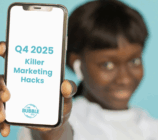Words: Belinda Connolly
In an attempt to stand out from the competition, brands turn to one of the most primitive art-forms: storytelling. Since early humans expressed their experiences of the world on cave walls tens of thousands of years ago, stories have been a significant way of communicating.
Brands now have more sophisticated tools at their disposal than caves and charcoal, but ultimately the goal is the same – to present the world to their audience in a manner that addresses audience needs, using language they understand and through channels where they are most receptive.
Storytelling goes a step further, allowing brands to connect with consumers on a deeper level, create lasting emotional connections and ultimately drive sales. Indeed, Psychology Today reports that positive emotions toward a brand have a far greater influence on consumer loyalty than other attributes.
Stories may just be the elements that your marketing strategy is missing.
There are tales to be told in every brand no matter what industry you’re in. The secret is knowing where to find them.
Draw from your customer experience
Storytelling is effective as a marketing tool as is allows brands to tap into consumers’ emotions. One of the best ways to start doing that is to put yourselves in the feet of your ideal customer.
Qantas, for example, is known for its distinctive storytelling that focuses on the emotional aspect of travelling, especially for people returning home to Australia. Their digital marketing showcases their tagline ‘The Spirit of Australia’, which reflects how the airline embodies Australian values while creating a sense of emotion for Australian travellers. Depending on the audience, that emotion may be happiness, sadness or excitement; there are many reasons why people travel and Qantas understands this.
Go beyond the product, to the people
With so many brands vying for consumers’ attention, it can be challenging to capture and hold their interest. Sharing a unique and engaging story of the people behind a brand can make a memorable impression.
Boost Juice does this well – by incorporating storytelling and sharing the journey of brand founder Janine Allis, they engage customers through an honest journey. Janine Allis’s narrative of starting from a home-based business to growing Boost Juice into a global brand resonates deeply with consumers. This is more than smoothies – it’s sharing a journey of determination, innovation and success. This storytelling approach creates a personal connection with the audience, making Boost Juice a source of inspiration.
You can even go beyond the team behind a brand to tap into consumer experience. Share stories about how your product has impacted people’s lives. Often audiences want to share when a product has solved a problem for them. Many people do this via social media and will often include images of themselves with the product. This user-generated content not only makes for great repurposed content, but you’re also ticking a social-proof box, too.
How to create a compelling story
Your brand may be conservative and heritage, or you may be creating content for a new brand with young customers. Regardless of the profile your brand fits, there is a compelling story to be told. Your job is to find it and make it engaging and authentic. Here’s how:
- Know your audience. Before you start, you need to understand your target audience. Particularly – what are their pain points? What kind of stories are they most likely to resonate with? Knowing the answers to these questions can help you tailor your storytelling.
- Be authentic. Consumers can quickly spot a fake or insincere story, so always be genuine and transparent. Share real-life experiences, showcase your brand’s personality and be true to your values to build trust and credibility with your audience.
- Keep it simple. Avoid complex jargon or convoluted plotlines that may confuse or alienate your audience. Instead, tell a clear and concise story that is easy to follow and understand.
- Evoke emotions. Create a memorable and impactful story by highlighting joy, surprise, sadness or excitement. By tapping into your audience’s emotions, you can create a more profound and lasting connection with them.
Storytelling is a powerful tool that can help your brand connect with consumers, differentiate yourself from competitors and drive sales. By incorporating these storytelling tips into your marketing strategy you can create compelling stories that resonate with your target audience and leave a lasting impression.




